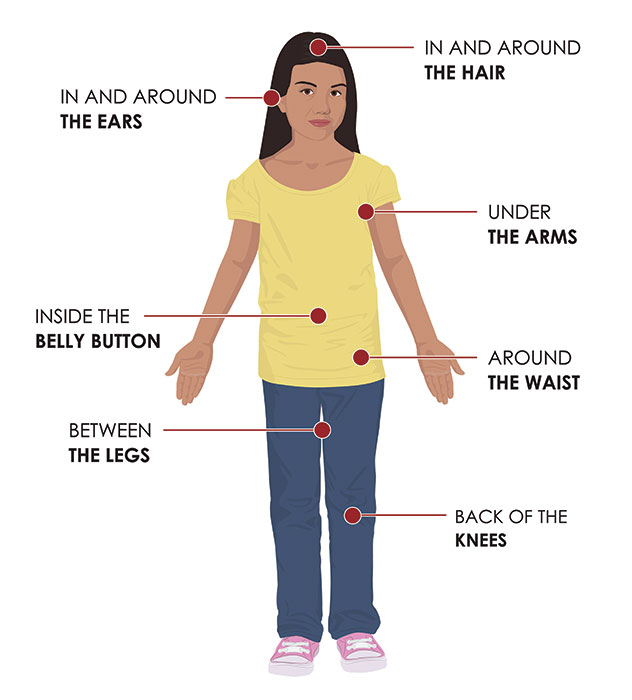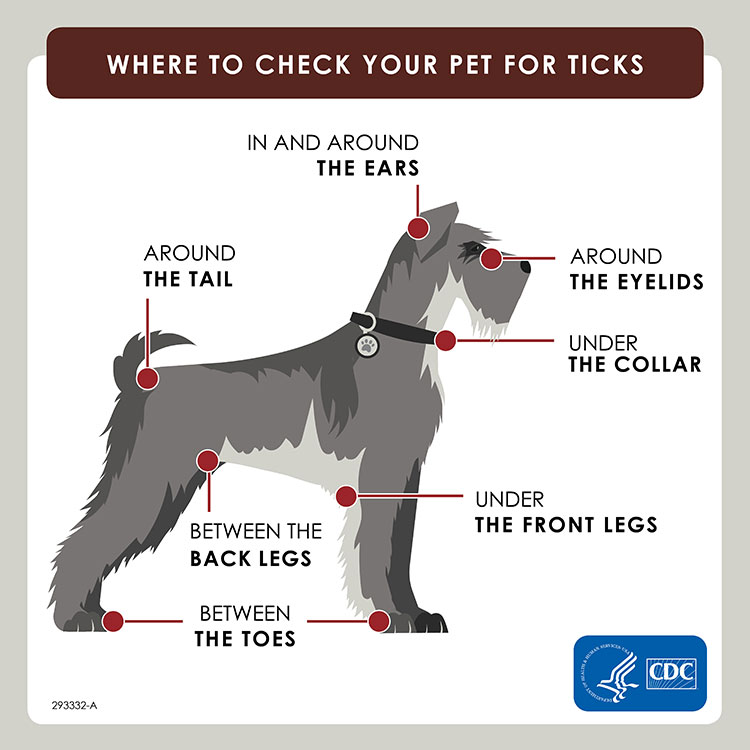Overview
Participate in a tick-borne disease study!
Are you concerned about Lyme Disease? Yale University, in partnership with the Connecticut Agricultural Experiment Station, are conducting a study to learn about community participation in tick-borne disease surveillance in Connecticut towns. Fill out this survey (https://buff.ly/49lZbIm) to participate in this study.
According to CDC, many tickborne diseases can have similar signs and symptoms. If you get a tick bite and develop the symptoms below within a few weeks, see your healthcare provider.
The most common symptoms of tick-related illnesses include:
- Fever/chills. All tickborne diseases can cause fever.
- Aches and pains. Tickborne diseases can cause headache, fatigue, and muscle aches. People with Lyme disease may also have joint pain.
- Rash. Lyme disease, Southern tick-associated rash illness (STARI), Rocky Mountain spotted fever (RMSF), ehrlichiosis, and tularemia can cause distinctive rashes.
Your healthcare provider should evaluate the following before deciding on a plan for treatment:
- Your symptoms,
- the geographic region where you were bitten, and
- lab tests, depending on the symptoms and the geographic region where you were bitten.
FAQ
Q: How can I prevent tick bites?
A: Tick exposure can occur year-round, but ticks are most active during warmer months (April-September). Know which ticks are most common in your area.
Before You Go Outdoors
- Know where to expect ticks. Ticks live in grassy, brushy, or wooded areas, or even on animals. Spending time outside walking your dog, camping, gardening, or hunting could bring you in close contact with ticks. Many people get ticks in their own yard or neighborhood.
- Treat clothing and gear with products containing 0.5% permethrin. Permethrin can be used to treat boots, clothing and camping gear and remain protective through several washings. Alternatively, you can buy permethrin-treated clothing and gear.
- Use Environmental Protection Agency (EPA)-registered insect repellentsexternal icon containing DEET, picaridin, IR3535, Oil of Lemon Eucalyptus (OLE), para-menthane-diol (PMD), or 2-undecanone. EPA’s helpful search toolexternal icon can help you find the product that best suits your needs. Always follow product instructions. Do not use products containing OLE or PMD on children under 3 years old.
- Avoid Contact with Ticks
- Avoid wooded and brushy areas with high grass and leaf litter.
- Walk in the center of trails.
After You Come Indoors
Check your clothing for ticks. Ticks may be carried into the house on clothing. Any ticks that are found should be removed. Tumble dry clothes in a dryer on high heat for 10 minutes to kill ticks on dry clothing after you come indoors. If the clothes are damp, additional time may be needed. If the clothes require washing first, hot water is recommended. Cold and medium temperature water will not kill ticks.
Examine gear and pets. Ticks can ride into the home on clothing and pets, then attach to a person later, so carefully examine pets, coats, and daypacks.
Shower soon after being outdoors. Showering within two hours of coming indoors has been shown to reduce your risk of getting Lyme disease and may be effective in reducing the risk of other tickborne diseases. Showering may help wash off unattached ticks and it is a good opportunity to do a tick check.
Check your body for ticks after being outdoors. Conduct a full body check upon return from potentially tick-infested areas, including your own backyard. Use a hand-held or full-length mirror to view all parts of your body. Check these parts of your body and your child’s body for ticks:
- Under the arms
- In and around the ears
- Inside belly button
- Back of the knees
- In and around the hair
- Between the legs
- Around the waist

Q: How do I prevent tick bites on my pets?
A: Dogs are very susceptible to tick bites and tickborne diseases. Vaccines are not available for most of the tickborne diseases that dogs can get, and they don’t keep the dogs from bringing ticks into your home. For these reasons, it’s important to use a tick preventive product on your dog.
Tick bites on dogs may be hard to detect. Signs of tickborne disease may not appear for 7-21 days or longer after a tick bite, so watch your dog closely for changes in behavior or appetite if you suspect that your pet has been bitten by a tick.
Talk to your veterinarian about:
- The best tick prevention products for your dog
- Tickborne diseases in your area
To further reduce the chances that a tick bite will make your dog sick:
- Check your pets for ticks daily, especially after they spend time outdoors.
- If you find a tick on your pet, remove it right away.
- Reduce tick habitat in your yard.
Note: Cats are extremely sensitive to a variety of chemicals. Do not apply any tick prevention products to your cats without first asking your veterinarian!
Note–September 21, 2018: FDA Fact Sheet for Pet Owners and Veterinariansexternal icon about Potential Adverse Events Associated with Isoxazoline Flea and Tick Products. For additional information, please talk to your veterinarian.

Q: How do I remove a tick bite?
A: CDC has developed a tick bite bot, which is an interactive tool that will assist individuals on removing attached ticks and determining when to seek health care, if appropriate, after a tick bite.
CDC Tick Bite Bot
Resources
- CT Vector-borne Disease Surveillance (6/26/2024) – CT DPH
- Learn more about ticks – CDC
- Tickborne Diseases of the United States – CDC
- Regions where ticks live – CDC
- Tick ID – CDC
- Tick bite data tracker – CDC
Updated: July 23, 2024
